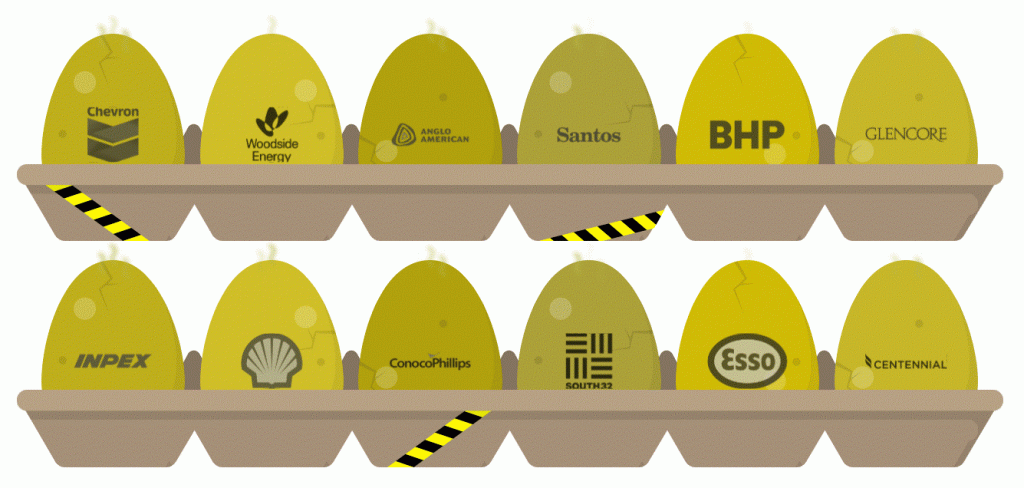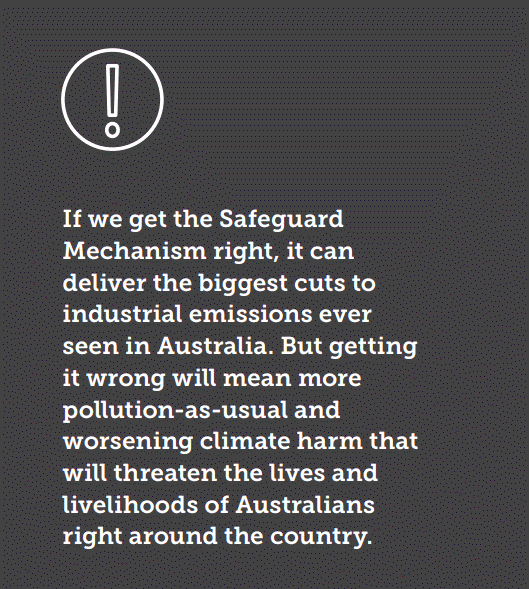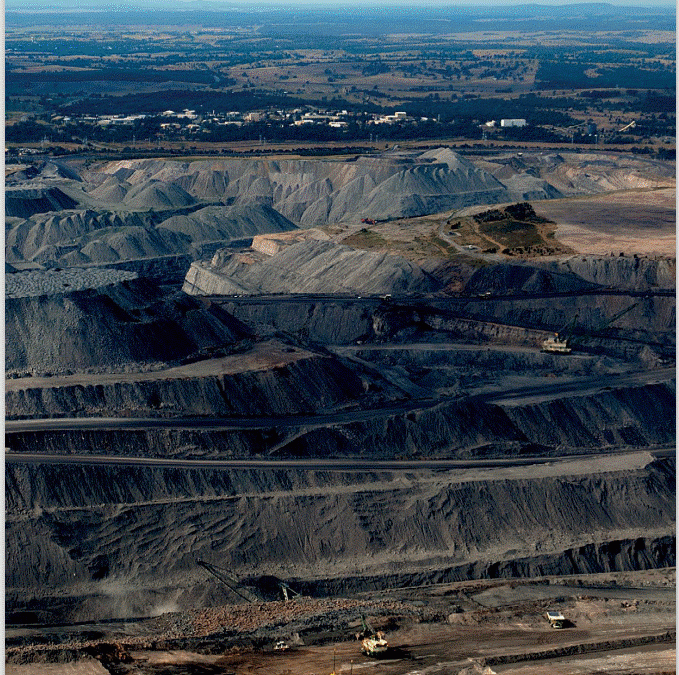The upcoming Safeguard Mechanism could drive real emissions reduction, but as it stands it risks letting Australia’s biggest polluters off the hook through purchasing unlimited dodgy offsets.
Image: Open cut coal mine – Hunter. Photo by Jeremy Buckingham/Flickr Licensed under Creative Commons 2.0, refer Page 22 Climate-Council-Report-Introducing-the-Dirty-Dozen-Feb-2023-1.pdf (climatecouncil.org.au)
Australia’s top emitters have not been pulling their weight
Currently, approximately 215 facilities, which account for 28% of Australia’s annual emissions, have virtually no emissions reduction requirements guiding their transition to cleaner operations. Yes, we know households have been installing rooftop solar at a cracking pace, and Councils and State governments have been working hard generally to get renewables built and phase out coal-fired electricity, but big emitters – including oil and gas companies – have been doing little. In fact, facilities covered by the mechanism have increased their pollution since the scheme commenced.
Effectively the top 215 emitters overall have been free riders on Australia’s efforts and have been dodging serious de-carbonisation. And the top 12 emitters, the ‘dirty dozen’ – Chevron, Woodside Energy, Anglo American, Santos, BHP, Glencore, Inpex, Shell, ConocoPhillips, South 32, Esso and Centennial – are the worst offenders.

Refer: INTRODUCING THE DIRTY DOZEN | Climate Council
Reforming the safeguard mechanism
The safeguard mechanism is part of a federal policy framework intended to manage and reduce carbon emissions from Australia’s biggest climate-polluting companies. It sits alongside other schemes including the Emissions Reduction Fund that buys carbon credits and encourages projects to be developed that will remove or cut carbon. Australian carbon credits (ACCUs) can also be purchased by the companies.
The Albanese Government is currently considering reforms to the safeguard mechanism to make it more effective in reducing emissions. It was one of the key policies the new government announced to help meet their 43% emissions reduction target for 2030.
So what are the ”top tips”?
The CLIMATE COUNCIL suggests the following four objectives must be met under the revised Safeguard legislation/regulation:
#1 The Safeguard Mechanism must deliver genuine emissions reduction
The Safeguard Mechanism must send a strong signal to major polluters to transform their operations to deliver genuine emissions reduction. Allowing corporations to buy unlimited carbon offsets to cover up pollution as usual will not achieve this. There should be a clear and strong cap on the use of carbon offsets within the Safeguard Mechanism.
#2 Don’t open the door to new coal, oil and gas
The Intergovernmental Panel on Climate Change (IPCC) and the International Energy Agency (IEA) have both made clear that there is no room for new coal, oil and gas projects if the world is to avoid a climate catastrophe. The IPCC’s Sixth Assessment Report shows clearly that existing and currently planned fossil fuel projects would blow any chance of limiting warming to 1.5°C (IPCC 2021). The International Energy Agency’s (2021) pathway to Net Zero by 2050, assumes no investment in new fossil fuel supply, including gas.
#3 Australia’s biggest polluters must pull their weight
The Safeguard Mechanism must ensure major polluters do a fair, proportional share of Australia’s required emissions reduction task. The simplest way to achieve this would be to require entities within the scheme to reduce their emissions by at least 43% by 2030, in line with Australia’s current national target.
#4 No special deals for some sectors/companies at the expense of everyone else
Corporations which export overseas (so-called ‘Emissions Intensive Trade Exposed Industries’) have called for special treatment within the Safeguard Mechanism because of their exposure to international trade competition. They should not be given special treatment within the scheme – such as more lenient targets for annual emissions reduction. Any assistance which is given should focus on measures to help achieve transformation, such as funding for technology innovations and access to expertise that reduces emissions or increases energy efficiency or enables the use of renewable energy.

Refer: Climate-Council-Report-Introducing-the-Dirty-Dozen-Feb-2023-1.pdf (climatecouncil.org.au)
Further information
Professor Macintosh’s analysis on the lack of integrity in Australia’s carbon offsets: summary and presentation video.
Professor Macintosh is the Director of Research at The Australian National University Law School. He was Chair of the Australian Government’s Domestic Offsets Integrity Committee and Emissions Reduction Assurance Committee between 2013-2020, and his evidence prompted the Chubb Review.
Climate Council’s briefing paper on the Safeguard Mechanism: summary here
Policy Loophole: The Australia Institute explores how purchasing Australia’s ineffective carbon credits will allow major emitters to keep on or even expand their emissions unless the proposed Safeguard Mechanism is improved.
Article by Ketan Joshi in Renew Economy exploring how the Safeguard Mechanism can be used for greenwashing: “Australia’s new government’s central climate policy is essentially a massive honour system for the country’s worst emitters – mostly fossil fuel companies – blended with a government mandated system of greenwashing and fake climate action. The ‘Safeguard Mechanism’ was designed by the climate-denying Abbott government as a confusing and complicated greenwashing mechanism – something there just to be there, rather than to aggressively cut down on emissions.”

